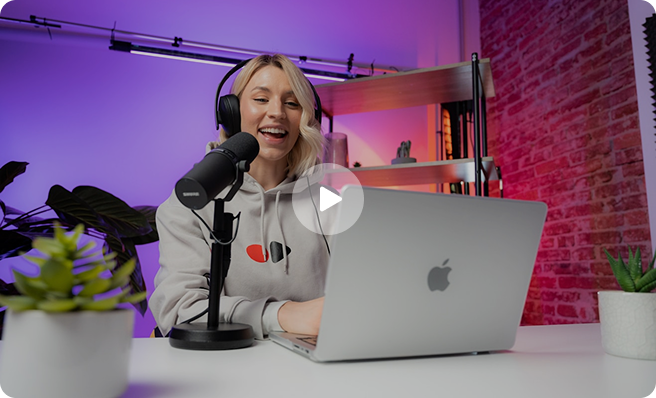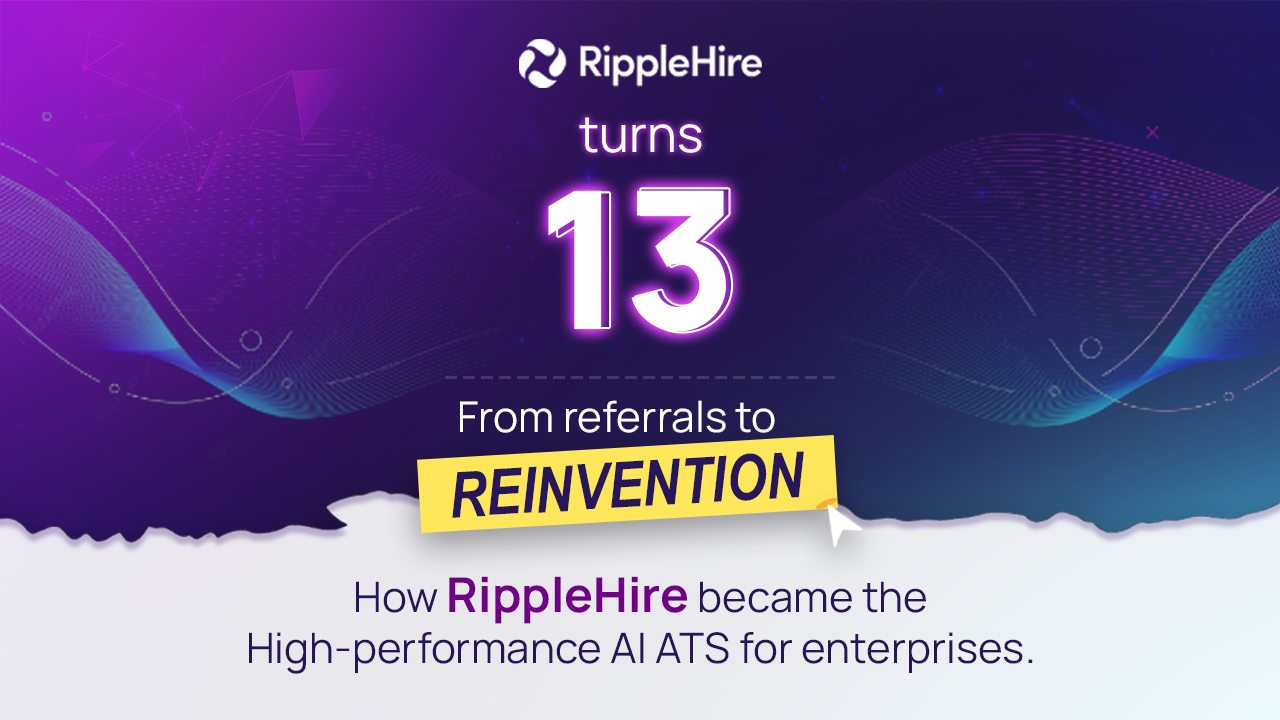Post-Interview Candidate Engagement: Converting Interest into Acceptances
Most hiring teams think their job is done once the interview ends. They wait to make decisions while candidates sit in limbo, wondering what's happening. This waiting period is actually your biggest opportunity to stand out from other companies.
Good candidates often have several job options, and the company that stays in touch and shows genuine interest usually wins. Small gestures during this time create big impressions.
This guide breaks down easy-to-follow steps for keeping candidates engaged after interviews, building stronger relationships with them, and turning their interest into actual job acceptances that stick.
Send a quick follow-up within 24 hours
Most companies leave candidates in complete silence after interviews end. This creates anxiety and makes people wonder if they're still being considered. A simple 24-hour check-in changes everything.
Within one business day of any interview, send a brief message acknowledging the conversation. This doesn't need to be lengthy or filled with updates you don't have yet. Something like: "Thanks for taking the time to meet with our team yesterday. We enjoyed learning about your experience with digital marketing campaigns. We're still in the interview process and will have updates for you by [specific date]."
The key elements that make this work:
- Reference something specific from the interview to show you were listening
- Give a realistic timeline for next steps
- Keep the tone warm but professional
This approach works because it addresses the candidate's biggest concern right after interviews: "Did I do okay, and are they still interested?" Instead of letting doubt creep in, you're reinforcing their value while managing expectations about timing.
The follow-up doesn't require internal decisions or lengthy discussions with your hiring team. Anyone can send this type of message immediately after interviews conclude. Candidates consistently mention these quick acknowledgments as positive differentiators when comparing their experience across multiple companies.
Small gestures during high-anxiety moments create outsized positive impressions. When candidates feel valued in the immediate aftermath of interviews, they remain more engaged throughout your entire decision process.
Share what's actually happening in your hiring process
Candidates want to know what's happening with their application, but most companies treat their hiring process like a black box. Sharing appropriate behind-the-scenes information builds trust and keeps people invested in your opportunity.
Instead of generic "we're still reviewing applications" messages, give candidates actual insight into your process. For example:
"We're currently scheduling final interviews with our top three candidates and expect to complete those by Thursday. After that, our hiring team meets on Friday to discuss final decisions. You should hear from us with the next steps by early next week."
This level of transparency works for several reasons:
- It shows respect for their time - Candidates can plan accordingly instead of checking email obsessively
- It demonstrates organization - A clear process suggests a well-run company
- It reduces anxiety - Knowing where they stand eliminates guesswork
You can also share positive but non-committal updates: "Your interview feedback was very positive across the team," or "The hiring manager specifically mentioned your insights about supply chain optimization." These messages keep candidates engaged without making promises about outcomes.
The information you share doesn't need to reveal internal disagreements or sensitive details. Focus on process milestones, general timelines, and positive observations that don't commit you to specific decisions. Candidates appreciate being treated as partners in the process rather than passive participants waiting for judgment.
Send helpful resources related to your interview conversations
Traditional follow-up communication focuses entirely on process updates, but the most effective post-interview engagement provides ongoing value to candidates. This approach keeps you top-of-mind while demonstrating your company's expertise and culture.
Share relevant industry articles that connect to topics discussed during interviews. If a candidate mentioned challenges with team management, send them a thoughtful piece about leadership strategies with a note like:
"This reminded me of our conversation about scaling engineering teams. Thought you might find the section on delegation frameworks interesting."
Other value-add touchpoints include:
- Inviting them to company webinars or public events
- Sharing news about company wins that relate to their potential role
- Sending updates about industry developments that impact their field
- Offering introductions to team members for informal conversations
The goal isn't to overwhelm candidates with information, but to maintain meaningful contact that goes beyond "we're still deciding." Each touchpoint should feel natural and relevant to your previous conversations.
This strategy works particularly well for senior-level positions where decision timelines stretch longer. Candidates at the director level and above often have extended notice periods and multiple opportunities in play. Staying connected through valuable content keeps your opportunity visible during their decision process.
Value-add engagement also showcases your company culture indirectly. When candidates see thoughtful communication and genuine interest in their professional development, they form positive associations with your workplace environment before they even receive an offer.
Block time in your calendar for candidate updates
Most companies handle candidate follow-ups whenever they remember, which means some people get forgotten completely. The solution is to treat candidate communication like any other important business appointment — schedule it in advance and stick to it.
At the start of your hiring process, block specific time slots in your calendar dedicated to sending candidate updates. For example, every Tuesday at 2 PM and Friday at 4 PM become your "candidate communication hours." During these blocks, you send updates to everyone in your pipeline, regardless of whether you have major news to share.
Create a simple tracking system showing which candidates need updates and when you last contacted them. This could be as basic as a spreadsheet with names, last contact date, and next scheduled touchpoint. During your blocked calendar time, work through the list systematically.
What this looks like in practice:
- Tuesday 2 PM: Send updates to anyone interviewed in the past week
- Friday 4 PM: Follow up with candidates awaiting final decisions
- Set calendar reminders for specific candidates who need updates on particular dates
The scheduled approach prevents the common problem of losing track of people in your pipeline. When candidate communication has dedicated time slots, it actually happens consistently. Candidates notice the difference between companies that communicate regularly versus those that only reach out when convenient.
This method also helps you identify when your hiring process is taking too long. If you're sending the same "still deciding" message for three weeks straight, it signals that your internal decision-making needs improvement. Regular communication schedules force accountability on both candidate experience and hiring efficiency.
Create a personalized timeline showing their application journey
Instead of keeping candidates in the dark about where they stand, give them a clear visual roadmap of your hiring process with their current position marked. This transparency reduces anxiety and keeps people engaged because they can see progress happening.
After each interview stage, send candidates a simple timeline showing the complete hiring process. Mark where they currently are and what comes next. For example: "Interview with hiring manager ✓ → Team interview ✓ → Reference checks (you are here) → Final decision → Offer discussion."
Include realistic timeframes for each remaining step. Don't just say "reference checks" - specify "reference checks (3-5 business days)" so candidates know what to expect. Update the timeline as they move through your process, celebrating each milestone they complete.
Make the timeline feel personal by including details specific to their journey:
- "Your interview with Sarah went really well - she especially liked your ideas about process improvement."
- "Next up: 30-minute call with our CTO on Thursday at 2 PM"
- "Final step: Our hiring committee meets every Friday to make decisions."
This approach works because it transforms a mysterious waiting period into a clear progression with visible endpoints. Candidates can see they're moving forward rather than sitting in limbo. They also appreciate understanding your company's decision-making structure instead of wondering who makes hiring choices.
The timeline format makes it easy for candidates to share updates with their family or current employer. When someone asks, "How's the job search going?" they can point to specific progress rather than saying "still waiting to hear back." This clarity often increases their patience with longer hiring processes.
Make post-interview communication actually happen
When you're juggling multiple candidates across different roles, someone always gets forgotten. Hiring managers forget to send updates, recruiters lose track of timelines, and good candidates slip away because of poor communication.
RippleHire's hiring platform solves this problem by automating the follow-up process. Set up your communication sequences once, and the system handles the rest. Candidates get timely updates about their application status, interview feedback gets shared automatically, and nothing falls through the cracks. No more manual tracking or hoping someone remembers to call back.
The numbers speak for themselves — companies using RippleHire consistently achieve candidate experience scores of 4.8/5 because their communication stays on track. The platform sends the right message to the right candidate at the right time, every time. Your hiring team focuses on having meaningful conversations instead of chasing down status updates and managing spreadsheets.
Book a demo with RippleHire and let us show you how we can make your hiring process smarter and efficient.
Frequently Asked Questions
1. How soon should we follow up with candidates after interviews?
Send a follow-up message within 24 hours of any interview. This doesn't need to include decisions you haven't made yet - just acknowledge the conversation and provide a realistic timeline for next steps.
Reference something specific from the interview to show you were listening, and give a clear date when they can expect updates. This addresses their biggest post-interview concern: whether you're still interested.
2. What should we include in post-interview follow-up messages?
Include three key elements: acknowledgment of the interview conversation, reference to something specific discussed, and a realistic timeline for next steps. For example, mention their experience with digital marketing campaigns and when they'll hear back.
Keep the tone warm but professional. The goal is to address candidate anxiety about whether they did well and if you're still considering them for the position.
3. How much detail should we share about our hiring process with candidates?
Share actual process insights instead of generic "we're still reviewing" messages. Tell them you're scheduling final interviews with the top three candidates and expect decisions by Friday, so they'll hear by early next week.
This transparency shows respect for their time, demonstrates your organization, and reduces anxiety. Focus on process milestones and general timelines without revealing internal disagreements or sensitive details.
4. What types of helpful resources can we send to candidates during the waiting period?
Send industry articles that connect to interview topics, company webinar invitations, news about company wins related to their potential role, or introductions to team members for informal conversations.
If a candidate discussed team management challenges, share a thoughtful leadership article with a note connecting it to your conversation. Each touchpoint should feel natural and relevant to previous discussions.
5. How can we ensure consistent candidate communication throughout the hiring process?
Block specific time slots in your calendar for candidate updates - like every Tuesday at 2 PM and Friday at 4 PM. Treat these like important business appointments and stick to the schedule.
Create a simple tracking system showing which candidates need updates and when you last contacted them. Work through the list systematically during your blocked communication hours to prevent anyone from getting forgotten.
6. Why do candidates appreciate transparency about hiring timelines?
Transparency helps candidates plan accordingly instead of checking email obsessively, demonstrates your company is well-organized with clear processes, and reduces anxiety by eliminating guesswork about their status.
You can share positive but non-committal updates like "interview feedback was very positive" or mention specific insights they provided. Candidates prefer being treated as partners rather than passive participants waiting for judgment.
7. What happens when we don't maintain post-interview engagement?
Poor communication creates anxiety and makes candidates wonder if they're still being considered. Good candidates often have multiple job options, and companies that stay in touch usually win over those that go silent.
Candidates consistently mention quick acknowledgments and regular updates as positive differentiators when comparing experiences across companies. Small gestures during high-anxiety moments create outsized positive impressions that influence their final decisions.















